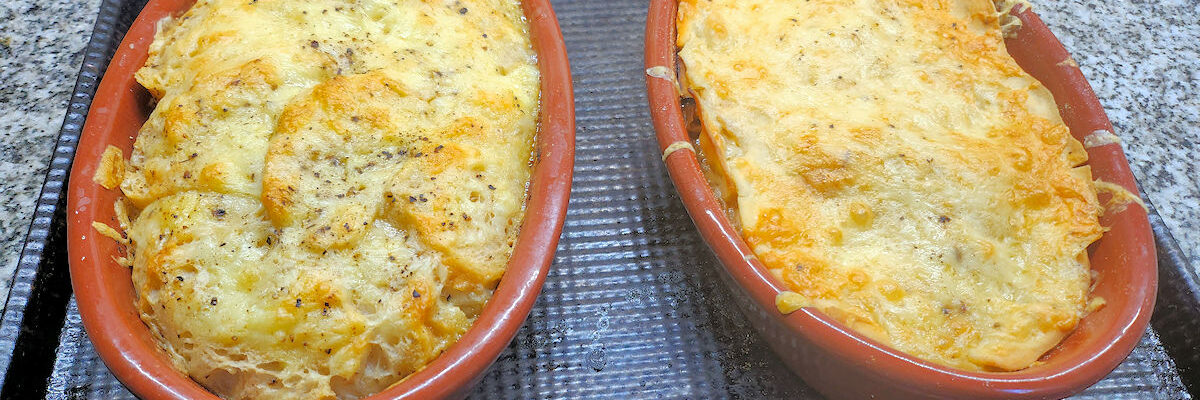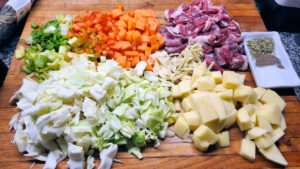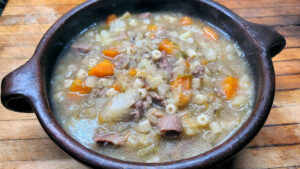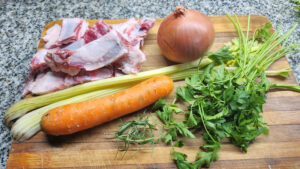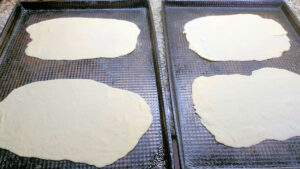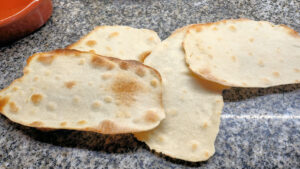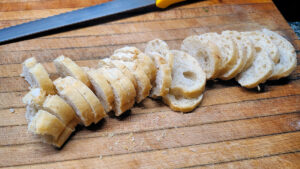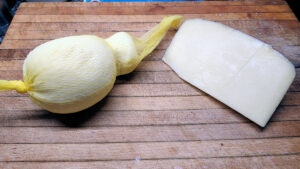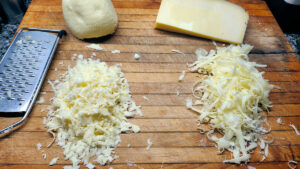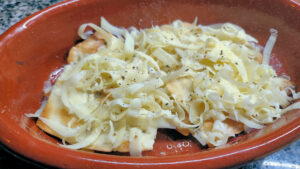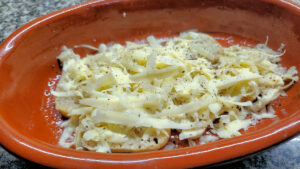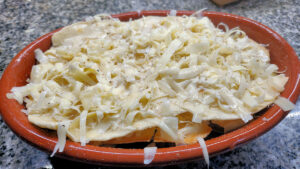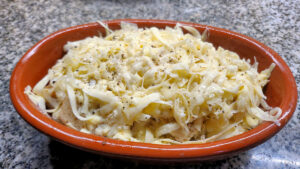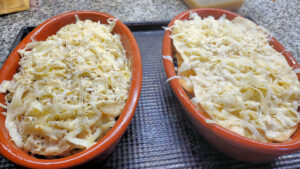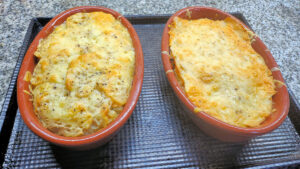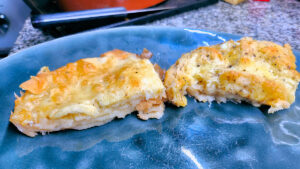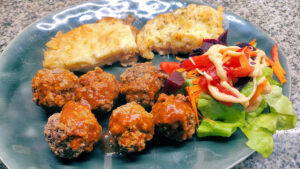We’re back with Stan! Yes, it’s been awhile. The dish I’m about to demonstrate uses lamb stock and I kept putting off making some sort of lamb dish in order to have lamb bones leftover to make stock from. But we were on a bit of a stew fetish for a couple of weeks there with colder weather, and I made a lovely lamb and cabbage stew that gave me plenty of bones leftover for making stock.
Basically – everything into a pot – diced up lamb, carrot, rocoto chili, green onion, cabbage, ginger, garlic, potato, salt, pepper, and dried mint. Simmered it all together, added some ditalini pasta and finished cooking it until the pasta was just right. But enough about that, we’re in Sardegna, or Sardinia, with our man Stanley Tucci.
And, we had the stuff to make our lamb stock. First off, I roasted the lamb bones that I’d taken the earlier lamb off of, along with the carrot and onion. Then into a pot with celery, parsley, mint, and rosemary, salt, and some peppercorns. Simmered it for around an hour and a half, then strained it off, and then let it sit overnight in the refrigerator to solidfy the fat on top and remove that. Ready to go on!
The dish in question that Mr. Tucci chose to present was a modern Italian restaurant’s reinterpretation of a classic Zuppa gallurese sometimes also called Zuppa cuata. Gallura was/is the name of the island in local dialect. And zuppa is, ostensibly, soup, but this isn’t a soup, it’s a baked dish, and fits into the same category as things that are sort of bread pudding-ish, from sweet trifles (zuppa inglese, or sopa inglesa in Spanish), or sopa paraguaya, which is a sort of cornbread. Here, I gather, the term comes not from soup, but from the verb azupparse, to soak or to drench. I assume that the Spanish version was adopted from the Italian, since the Spanish verbs are different. And what these dishes tend to have in common is that they involve some sort of soaked bread type ingredient. Cuata, which seems a less used name, means cured, and I’m not clear how that relates to this zuppa. Then again, like much food history, this could all be made up. Who knows?
Now, there were two real differences that I saw from the classic recipe in the version presented at the restaurant that Tucci was at. First, instead of using a classic rustic semolina bread, they used carta di musica, or pane carasau, a very thin, crisp, cracker like flatbread. There is a classic version of the zuppa gallurese using a rosemary and olive oil focaccia type bread called spianata, so there’s some precedent for using a flatbread, but usually not this flat, nor this texture. Then again, pane carasau is oft-times served almost like a pasta, soaked in tomato sauce until soft and pliable. Like chilaquiles and tortillas! The second difference wasn’t pointed out, but usually zuppa gallurese is made with either a local cheese called casizolu, which is basically what we tend to call caciocavallo – Sardinian versus Italian names, or that cheese combined with Sardinian pecorino. The version he presented seemed to only have pecorino, which I’m sure isn’t unheard of, just didn’t sound as traditional.
Either way, I decided to make both versions side by side – the way I know it from the past, and the way he presented it.
Finding pane carasau here is highly unlikely, and, it’s relatively easy to make, so that’s where we’ll go next. A mix of all-purpose flour and fine semolina, roughly 2:1, a good pinch of salt, and about a third of the total volume in water, just enough to make a soft, but not sticky dough. (My measurements were 1/2c flour, 1/4c semolina, 1/4t salt, 3/8c water.)
Let the dough rest a bit, then portion it off (traditionally, this is made in a big sheet, about the size of a carta di musica, or music page, though here I made them about half that size because of the baking dishes I was going to use. In the end it was irrelevant, because I ended up breaking the flatbread into shards.
Bake in a medium hot oven until lightly browned on top, flip them over and the same for the underside.
For the traditional version, bought some rustic, part semolina bread, let it sit for a couple of days to get slightly stale, and sliced it into rounds.
Here are our two cheeses – caciocavallo and pecorino sardo. Coarsely grated. I actually grated about three times as much of the pecorino and twice the amount of caciocavallo as pictured.
As I said, I broke up the pane carasau into shards – mostly because they were still too big to fit. Then soaked them in lamb stock and placed them in the lightly oiled baking dish.
Topped, as instructed, with grated pecorino. The traditional recipe uses a good amount of ground pepper in each layer, and I went with that, assuming that basic seasoning just didn’t make the editing cut.
I did the same with the rounds of the regular bread, but this time using a mix of equal parts of the two cheeses.
The classic version repeats the bread and cheese layers for a total of four, so I did the same with the Tucci version.
Ready for the oven!
Ready for us!
The pane carasau version is on the left. You can see the layers defined fairly clearly, almost like a lasagna. The bread version melds more into a bread pudding-like look.
Now, these are side dishes, and though a real classic would be to accompany it with a slow-cooked beef, red wine, and rosemary stew, we had some meatballs and tomato sauce to heat up and accompany, along with a simple salad.
So, we both agreed that we like the texture of the pane carasau version better. It had a more toothsome quality to it, versus that soft, sort of one texture bread pudding. On the other hand, the use of the two cheeses was the clear flavor winner. So, a mashup is clearly the way to go, and maybe add a couple of more layers to make it even prettier (because the fuller, sort of domed version of the regular bread really is more attractive, at least to me. Or, maybe try that version with the rosemary spianata!
